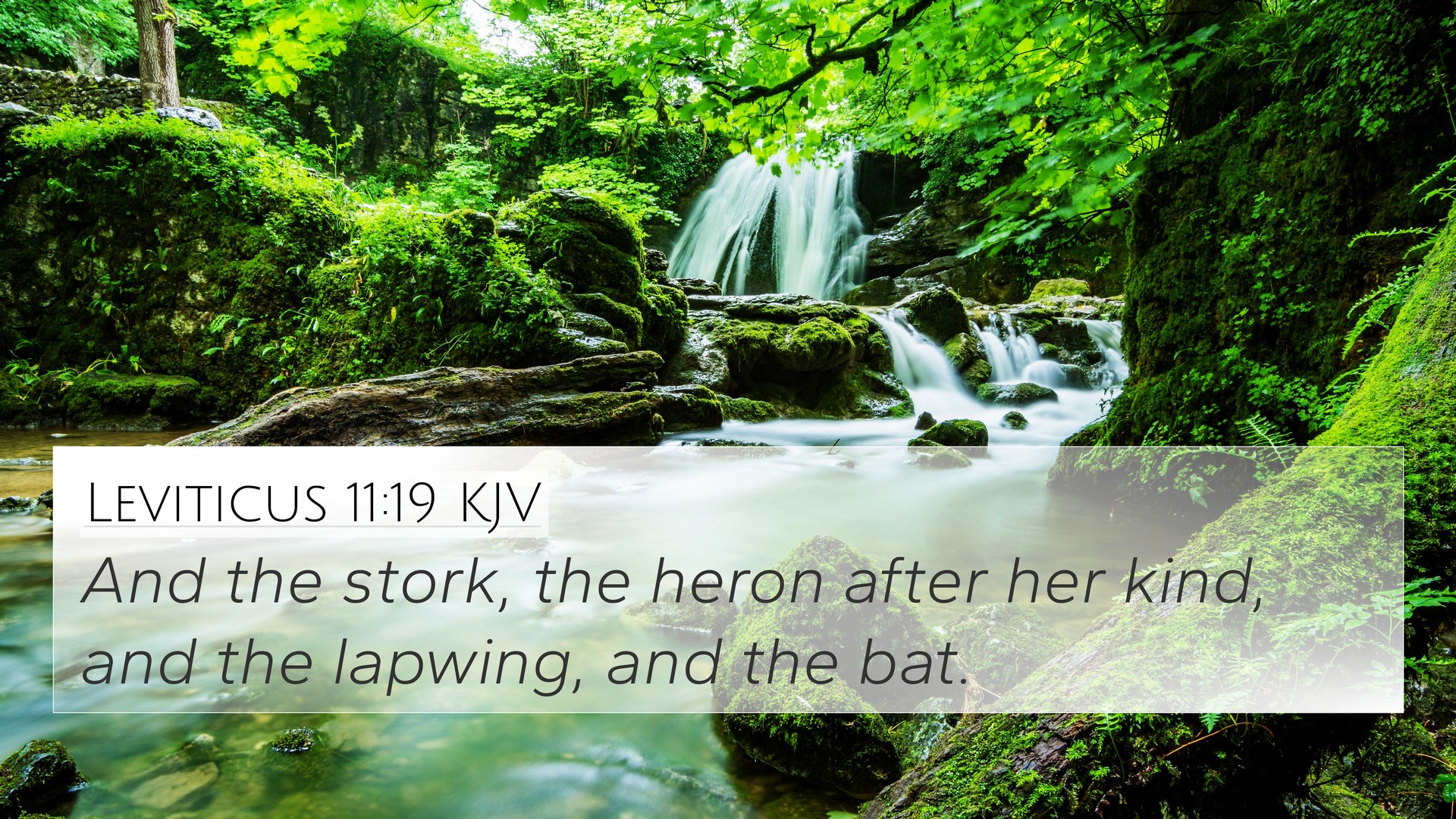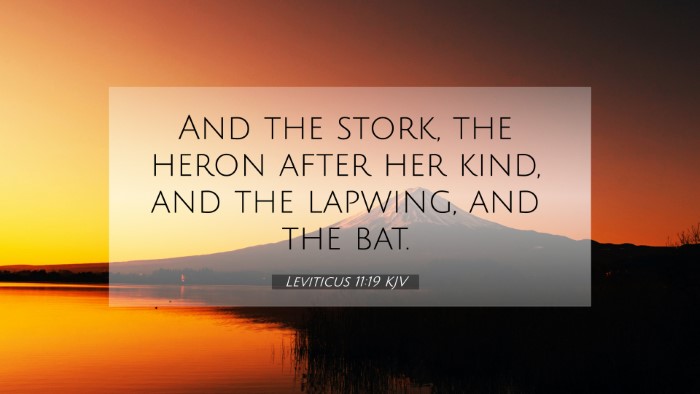Understanding Leviticus 11:19
Leviticus 11:19 states: "And the stork, the heron after her kind, and the lapwing, and the bat." This passage is part of the dietary laws given to the Israelites, laying out what is considered clean and unclean animals.
Summary of the Verse
This verse categorizes specific birds that were forbidden for the Israelites to eat. The names listed are often debated in translation, but their significance lies in the broader laws concerning purity and holiness that the Israelites needed to follow as God's chosen people.
Commentary Insights
-
Matthew Henry's Commentary:
Matthew Henry emphasizes that these laws were intended to separate the Israelites from surrounding nations. The listing of forbidden birds reflects God's holiness and the need for His people to uphold standards that represent His character.
-
Albert Barnes' Notes:
Barnes notes that the birds mentioned had specific characteristics that made them unclean, such as scavenging behavior. This serves as a reminder of God’s calling for His people to maintain purity and righteousness, which could be reflected in their dietary choices.
-
Adam Clarke's Commentary:
Clarke points out that the classification of these animals, including the bat, highlights the distinctions between different species and reinforces the law's role in teaching the Israelites about holiness in their lives and worship.
Thematic Connections
This verse is part of a larger legal framework that includes themes of cleanliness, obedience, and separation from sin. Each type of creature serves as a metaphor for those aspects of the Israelite identity—both in society and in their relationship with God.
Bible Cross-References
Leviticus 11:19 relates to several other scriptures that enrich the understanding of the themes presented in the Law:
- Deuteronomy 14:11-18: Further laws on clean and unclean birds.
- Isaiah 66:17: A strong warning against consuming unclean animals.
- Mark 7:14-23: Jesus' teaching on what truly makes a person unclean.
- Acts 10:9-16: Peter's vision about clean and unclean animals, which shifts the understanding of these laws in the New Testament.
- 1 Peter 1:15-16: A call for holiness among God's people, reflecting the nature of God.
- Romans 12:1: An appeal for believers to offer themselves as a living sacrifice, which connects to the idea of being set apart.
- Hebrews 13:9: A caution against diverse teachings, reiterating the importance of holding onto sound doctrine.
Exploring Cross-References and Connections
The dynamics of creating a cross-reference Bible study based on Leviticus 11:19 enable deeper insights into the relationship between the Old and New Testament teachings, shedding light on the transition from Old Covenant dietary laws to the New Covenant emphasis on the heart's purity.
How to Use Bible Cross-References
To effectively use cross-references within your Bible study, consider the following methods:
- Identify Key Words: Look for key words or phrases in the verse that may connect to other passages.
- Use a Concordance: Use a Bible concordance to find related verses that share similar themes.
- Compare Contexts: Analyze how different contexts shed light on the meaning of the verse.
- Create Thematically Linked Studies: Organize studies around similar themes or teachings from various parts of the Bible.
Conclusion
In conclusion, Leviticus 11:19 highlights God's desire for His people to be distinct and holy. Understanding its meaning through the lens of surrounding scripture and the insights from public domain commentaries allows believers to appreciate the continuity of God's teachings on purity and righteousness throughout the Bible. The cross-references provided lead to a richer, more comprehensive understanding of not just this single verse, but the larger narrative and laws that shape the moral and spiritual framework of faith.


